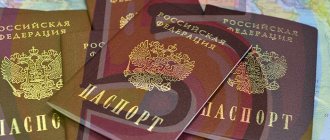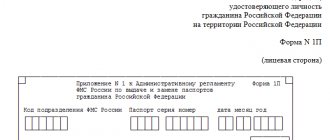What is an electronic passport?
An electronic passport is a new identity document that the Russian Government plans to introduce throughout Russia. This is a plastic card with a built-in electronic chip. It will contain the citizen’s personal data, photograph, and will also include document data:
- TIN,
- SNILS,
- Driver's license details.
This data will be encoded into the digital chip of the new card.
Unlike the paper version, the electronic passport will contain several different photographs. One will be placed on the front side of the plastic card, the others will be encoded in the chip. Photographs will be taken from different angles. In addition, the following will be recorded on the electronic chip:
- Photo of the iris of the eye,
- Fingerprints.
This information will allow you to reliably identify the owner and also protect the electronic passport from forgery.
According to plans, a new passport will be changed once every 10 years. In addition, it can be replaced due to changes in personal data, or in the event of its loss.
What is a biometric passport?
Biometric travel documents were introduced into circulation in the Russian Federation in 2006. At first, they were issued only in the central part of the country.
But today you can get a new generation international passport at any department of the migration service in Russia.
Appearance
The main difference between the new model and standard foreigners is the presence of a chip with data about the owner . In many countries, it is this chip that is used to identify a citizen upon entry.
The presence of a chip simplifies the identification of the passport owner, and at the same time serves to additionally protect the document from counterfeiting.
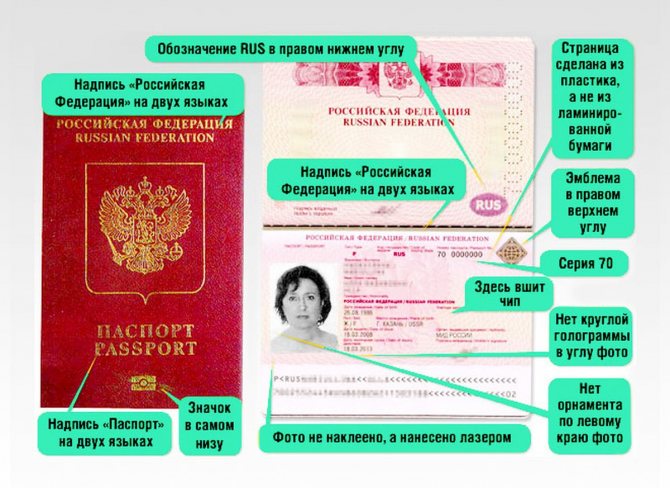
The second important difference between a biometric passport and a standard one is the validity period.
If a regular foreign passport can be used for 5 years, then a new generation foreign passport will be valid for 10 years from the date of issue.
Other features relate to appearance:
- the inscriptions on the cover are written in two languages – Russian and English;
- there is a chip icon on the cover;
- the photo is not pasted onto the page, but applied with a laser;
- the page with the photo is made of plastic;
- The document number is printed on all pages by perforation;
- On the photo spread there are additional protective elements - the RUS emblem and sign.
But even if you don’t know what the new Russian biometric international passport looks like, you can recognize it by touch. It is 10 pages thicker than a standard document . Undoubtedly, this will be convenient for people who frequently travel abroad.
Personal data and security
The following is recorded on the electronic media embedded in the foreign passport:
- photo of the owner;
- retinal scan;
- fingerprints;
- date and place of birth of the citizen;
- information about the authority that issued the document.
This list of data is followed in the Russian Federation.
In other countries that use biometric documents, the chips may contain additional information - the shape of the face, the sound of the voice.
In the USA, data is recorded not on the chip itself, but in the general database of the migration service. The chip in the passport contains only a link to an electronic government resource.
Russian services enter data about the owner of the document directly onto the chip built into the biometric foreign passport.
Despite the small amount of information, it is quite enough to enter all countries of the world.
Why was the issuance of biometric passports required?
In April 2010, an international standard was adopted requiring all passports to have machine-recognizable pages. From this moment on, the presence of a biometric chip in a foreign passport has become mandatory for all countries.
You can still get into a number of countries using the old format passport, but the list is getting shorter . And, for example, in the USA, the holder of an old passport simply will not be able to obtain an entry visa.
This explains the introduction of a new type of foreigners into use.
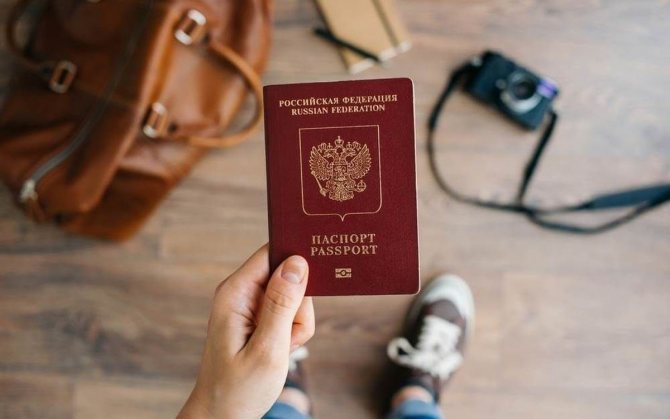
Advantages and disadvantages
An electronic passport has the following advantages:
- Convenient, compact size allows you to store the card in your wallet.
- Resistance to mechanical damage.
- Moisture resistance.
- A single document that stores the data of TIN, SNILS and other documents.
- The period for obtaining a document at the place of residence, and not at registration, is reduced from 60 days to 10 days.
- Possibility to apply for an electronic passport remotely.
In addition to the obvious advantages, there are also obvious disadvantages:
- Limited shelf life. The plastic card wears out from constant use. People who use such an ID every day may have to change their card every few years.
- Fragility. Despite the fact that a plastic card is stronger than a paper book, if used carelessly, it can be damaged, for example, by putting it in the back pocket of jeans and then sitting on a chair.
- Chip damage. In the event of such a breakdown, the document becomes impossible to use for its intended purpose. In addition, it will be impossible to read information from the chip if the reading device is not working or, for example, if there is a power outage.
- If an electronic passport falls into the hands of fraudsters, they will have access to all relevant information about its owner, including additional data such as TIN, SNILS and others. This can lead to unpredictable consequences.
- Not all cities and towns in Russia will immediately have reading devices. This means that you will have to use a classic paper passport there.
Despite the shortcomings, citizens will not have the opportunity to refuse the new ID card when its implementation is legally implemented.
When the project comes into force throughout Russia, all 14-year-olds will be required to receive an electronic passport, and will also require owners of paper documents to replace them with an electronic equivalent.
We also note that the Russian Orthodox Church is protesting against the introduction of new passports.
What will change in obtaining and replacing an ID card?
An electronic passport will be issued to all citizens. There will be the following changes:
- The passport will need to be changed every 10 years, as well as in the event of its loss, damage or change of personal data (for example, when changing a surname upon marriage).
- If the document is lost, it can only be obtained from the authority where the passport was originally issued.
- The period for processing a new document will be reduced to 10 days.

What is the amount of state duty
At the moment, the exact amount of the state fee for issuing an electronic passport for a citizen of the Russian Federation is not known. It is expected that it will be slightly higher than for issuing a regular paper document.
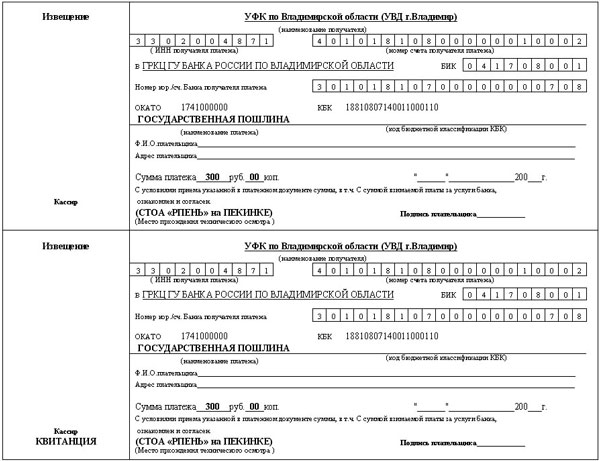
The estimated fee is about three and a half thousand rubles, the same as the cost of a biometric version of a foreign passport.
Who will need to get a new passport?
When the new standard is introduced, gradually all citizens of the Russian Federation will have to switch to it. The replacement procedure will take several years. There are a number of citizens who will need to immediately receive an electronic passport. These include:
- Citizens of the Russian Federation who have reached 14 years of age. Their first passport will be digital.
- Persons whose old document has expired. For example, upon reaching the age of 20 or 45 years.
In addition, you will need to obtain an electronic passport in the following cases:
- If the old document is worn out or damaged,
- If you lose your old ID card,
- When a citizen changes gender,
- If personal data changes requiring a document replacement,
- When you entered inaccurate data into a previous document.
In what cases is replacement necessary?
Reasons why Russians will have to receive plastic cards instead of traditional books:
- Replacement of passport at 20 and 45 years.
- First receipt.
- Changing data, for example, registration or gender.
- Damage (special or not) or natural wear and tear of a paper document.
- Loss of a document or its theft.
- Error in a citizen's personal data.
Russians have not yet agreed to change their documents to electronic ones. According to surveys, slightly more than 1/3 of the population agrees to replace the document, while more than half (55%) categorically disagree.
The state will have to create new conditions and opportunities for electronic cards so that the transition to them is as smooth and beneficial as possible, especially for older generations. But in the end, all citizens will sooner or later become owners of plastic cards.
Main functions of the new document
The new document retains all the properties of the old ID card. In addition to the personal identification function, a number of new features have been added to it:
- Pay for a ticket in transport, if you have a special reading device,
- Pay for services in medical institutions,
- Change your place of registration (registration) remotely,
- Get information about TIN, SNILS and driver's license,
- Register individual entrepreneurs and LLCs without visiting the tax office,
- Take part in elections
- Remotely open bank accounts,
- Deposit money according to payment orders.
Rules for obtaining or replacing an identity card
To date, the procedure for obtaining an electronic passport has not yet been developed and approved by the Russian Government. A paper type ID can be obtained at the passport office or at the MFC. Most likely, new plastic will be issued there.
It is safe to say that an application for the issuance of a new document can be submitted through the State Services portal when such an opportunity appears there. You can create a personal account on the State Services portal now. To do this, you need to fill out the registration form, indicating personal and contact information, as well as passport and SNILS information. After checking the data, a personal account will be opened for you. It is through him that it will be possible to order a new plastic ID card. But you will also have to pick it up at the passport office or MFC.
There are a number of documents that must be collected to obtain an electronic passport. These include:
- Statement,
- TIN (Individual Taxpayer Number),
- SNILS,
- Birth certificate if you receive the document at 14 years old, or a previous passport if you receive the document at an older age,
- Four photographs of the approved standard,
- Men over 18 years of age may be required to provide military identification.
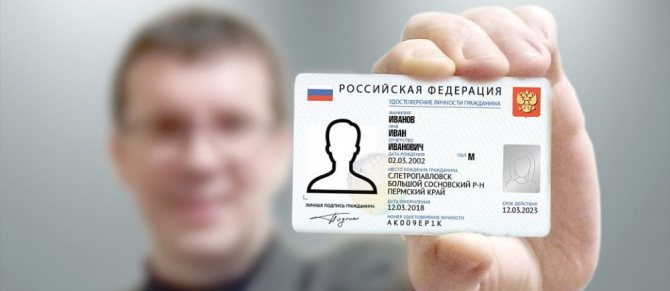
Russia is preparing to switch to new passports
To begin with, the Ministry of Internal Affairs promises to issue at least 100 thousand plastic cards instead of the usual passports after July 1, 2023. This will be the first stage of the corresponding program. In Moscow, they are going to start it on a pilot basis even earlier - from the end of this year. But an electronic ID will not become a “digital twin” of a person, which many fear.
“The planned start date for the issuance of a passport of a citizen of the Russian Federation, issued in the form of a plastic card containing an electronic storage medium, on the territory of the constituent entities of the Russian Federation - according to the technical readiness determined by the government of the Russian Federation, but no later than July 1, 2023,” the press service of the Ministry of Internal Affairs reported. affairs on Monday to the TASS agency.
The reference to the government in the departmental message is important. Currently, there is no regulatory basis for issuing digital ID cards. The legal basis for the passport system of the Russian Federation is Government Decree No. 828 dated 1997 (last revised in 2021), which contains a detailed description of what the passport form looks like. Government documents do not yet say anything about other types of passports, except paper ones.
As Minister of Internal Affairs Vladimir Kolokoltsev said at the ministry board in March, the transition to issuing “identifying documents with electronic media and a mobile application” is taking place within the framework of the departmental program “Digital Transformation for 2021-2023.” And this program, as explained on the Ministry of Internal Affairs website, is being launched in fulfillment of one of the five national goals, namely digital transformation.
It is promised to make a passport with an electronic storage medium more secure than a paper one, and if lost, it will be possible to quickly block it, according to an article on digital transformation in the January issue of the magazine of the Council of Ministers of Internal Affairs of the CIS countries “Commonwealth”.
Digitized at your own request
Today, the technical capacity of the Ministry of Internal Affairs allows issuing about 100 thousand plastic IDs, which in the messages of the Ministry of Internal Affairs are called by the acronym PEN (probably a personal or plastic electronic carrier). It will contain the owner’s biometric data - papillary patterns (fingerprints) and a digital photograph. Otherwise, it will contain the same data that is contained in a paper passport (registration at place of residence, marital status, children).
It is also assumed that the PEN will contain an electronic signature, similar to the one that can already be signed through the State Services website. The electronic passport will also have to be renewed, and every 10 years (owners of a paper passport update it only twice in their lives - at 25 and 45 years old).
The current attempt to “digitize” Russians is not the first. At the beginning of the century, the authorities set the IT industry the task of making it convenient for citizens to “use the state.” But the authorities’ experience in modernizing the passport system has so far been decidedly negative.
We are talking about the Universal Electronic Card project, which the Ministry of Internal Affairs began to implement in 2013, but abandoned halfway (after spending 170 billion rubles). In December 2021, the State Duma adopted a law canceling the universal electronic card project. JSC "Universal Electronic Card" officially closed in November 2021.
Over the short history of the “Universal Electronic Card”, 539 thousand Russians managed to receive it. The mistake of this project was that the specific content of the map was left to the discretion of the regions. In Moscow, the UEC did not work because it duplicated the already existing social card of a Muscovite. Other regions also found their own reasons.
By the way, the funds allocated for the launch of an electronic passport by the end of 2023 are much more modest than for the UEC - only 114.4 billion rubles. Moreover, as expected, these costs will be recouped over the course of several years due to state fees for issuing an electronic ID.
Like a paper passport, an electronic version will be issued to all citizens starting at the age of 14, and the recipient will have a choice of which option to prefer.
Less is safer
Technologically, there are no obstacles to the implementation of the project, because all or almost all of its components are already working and all that remains is to bring them together, assures Maxim Kudryavtsev, a member of the State Duma Committee on Information Policy, Information Technologies and Communications.
“In its content, an electronic passport is not much different from the State Services portal, where the user’s personal data is already contained. But not all personal data that a citizen accumulates throughout his life are required for his identification. It is unlikely that you will need to “stitch up” information about education, credit history and other irrelevant information into an electronic passport,” says the deputy.
In order to understand in practice what information is necessary and sufficient, and what may be redundant for inclusion in an electronic passport, the Ministry of Internal Affairs will begin implementing the project with a pilot region. From December 1, 2021, Moscow becomes this city.
According to Kudryavtsev, several options are being considered for how the process of identifying the owner of an electronic ID will look like, including using a QR code or using a mobile application. “We have some of the best mathematicians in the world in this country who can write any algorithm they ask,” he says.
According to him, during the pilot period the “burglary resistance” of digital passports will also be checked. An additional level of security should be the division of the entire array of personal big data into blocks isolated from each other - similar to how the unsinkability system is designed on sea vessels, in which the hulls are divided into isolated compartments.
Initially, an option was considered in which an electronic passport would serve as a repository for the complete big data of its owner and provide government agencies with access to a citizen’s digital profile, combining all information about him available in separate databases of government agencies and commercial companies.
But, the deputy believes, at least at this stage it would be reasonable to limit the “curiosity” of government agencies to the scope of the functionality of each of them.
“Each institution that may require access to personal data should only receive it to the extent necessary to provide a specific service. For example, when buying alcohol in a store, the seller will only have access to your date of birth, and he has absolutely no need to know your SNILS or marital status. But purely technologically, yes, a person’s entire digital footprint over a lifetime can be embedded into a microchip, and data can be added there automatically; the owner of a digital passport will not have to take any action to update the data,” confirms Kudryavtsev.
The legislator adds that the specific volume and type of information that can be recorded in the PEN should be determined, inter alia, by the State Duma based on a study of public opinion and the opinion of law enforcement ministries. It is known that some Russians are against the introduction of electronic passports out of fear that fraudsters can gain access to personal data by hacking into the servers of the Ministry of Internal Affairs. In this case, hackers will be able to create a complete electronic double of a citizen and perform illegal actions on his behalf, for which the “original” will be held responsible.
But, Kudryavtsev insists, most of these fears are not confirmed by practice.
“Everything new causes concern among some people - the same portal of State Services or personal accounts on the websites of various departments were considered by many to be a “gold mine” for cyber fraudsters. But over the entire period of their existence, cases of unauthorized access can be counted on one hand. Technologically, there are more than enough ways to ensure the integrity of personal data - for example, in the form of two-level confirmation, via SMS or something else. The fundamental impossibility of hacking an electronic passport is part of the ideology of this project,” says the deputy.
Finger is my document
The introduction of PENs will mean not only the emergence of a new format for storage media. With the receipt of a plastic passport, each citizen acquires a kind of analogue of a car VIN, which will remain with him for life. A lifetime identification number exists in a number of countries of the world (USA, Canada and others), where internal passports in the Russian sense do not exist, and citizens are identified by SIN, SSN, etc. - social security numbers.
Kudryavtsev does not exclude that in Russia a version of digital personal identification will be used in which this person will not even have to carry a plastic card with him, but will still need a smartphone. And it contains an application that works according to the same algorithm as the NFC contactless payment mechanism. Or, as proposed in the current digital passport project, identification will be made using a fingerprint, which, unlike a card or smartphone, cannot be lost, stolen or faked.
But, in order not to drive doubters into a corner, a period of simultaneous circulation of both types of passports - paper and plastic - is provided.
It is expected that skepticism regarding the latter will fade over time. At a meeting of the State Council on April 16, President Putin stated: digitalization of interaction between the state and citizens is a process with an open result. It is also important that the state itself does not step on the same rake again that was the embarrassment with the UEC.
A significant obstacle to the mass issuance of electronic passports may be what telecommunications experts call the “last mile problem.” A paper passport can be read by any official or policeman in the remotest corner, but to access electronic big data, every such corner must have at least a stable Internet - which has not been implemented today.
Also, the question of whether it will be possible with a Russian electronic ID to enter those countries (these are Abkhazia, Belarus, Kazakhstan and Kyrgyzstan) that allow Russians with an internal passport without a border crossing mark remains unresolved.
expert.ru
TAGS:IT technologies of RussiaEAIS "Russian passport"Legislation of RussiaIgor SerebryanyMinistry of Internal Affairs of RussiaRussian newsNew technologies in RussiaRussiaDigital economy of RussiaElectronic passport of a citizen of Russia


